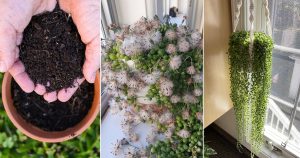Upgrade your gardening skills by learning how to get a Crown of Thorns to grow bushier and bloom like never before. Secret tips are waiting along!
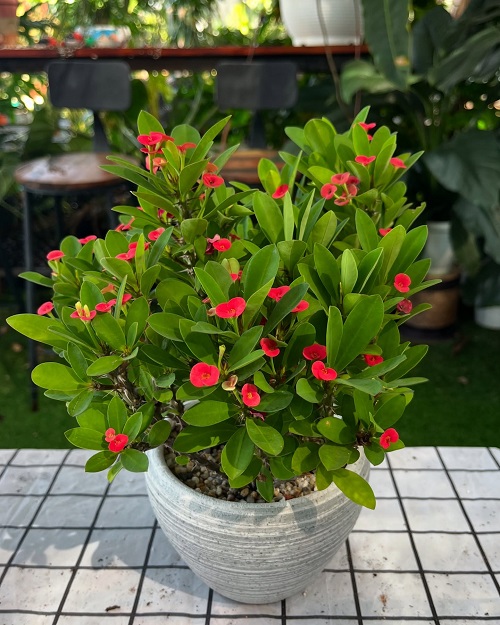
Crown of Thorns (Euphorbia milii) is a beautiful prickly shrub with bright green leaves and colorful flowers. If you have one with no flowers or very few blooms, then this guide will tell you everything about how to help it grow bushier and bloom more.
A Little Knowledge About the Crown of Thorns
You may be wondering if it is a cactus or a succulent? So, it is basically a perennial shrubby succulent with cactus-like stems covered in spines and bearing oval-shaped, elongated leaves at the end of the stems like a crown. It also bears beautiful flowers that are enclosed within long-lasting and bright bracts of red or yellow.
Going back in history, this plant is believed to have been used in Christ’s crown of thorns, and that’s where the common name comes from. Besides, in its native region (Madagascar) it can grow up to 6 feet tall. However, in most regions of the US, it typically grows only 2-3 feet tall when grown as a houseplant.
How to Get a Crown of Thorns to Grow Bushier and Bloom More?
1. Choose a Sunny Location
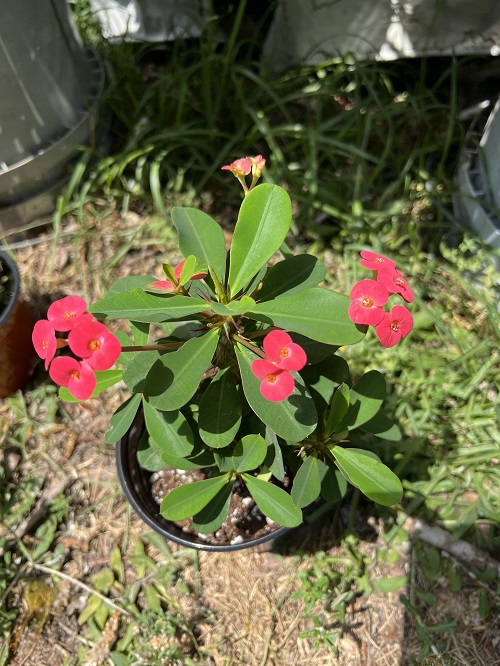
Crown of Thorns is a succulent that diligently worships sunlight! Look for a sunny spot where the morning sun’s rays fall and stay for nearly 3-4 hours, with brightness for the rest of the day. This is the perfect location for this plant. Since the more sunlight it gets, the healthier it will be, and the more blooms it will produce!
Many gardeners who struggled with fewer blooms have shared that plants receiving at least 2-3 hours of morning sun and 1-2 hours of evening rays started blooming within 20-25 days. Moreover, with a consistent supply, the flowers turned out to be bright and colorful.
2. Good Potting Soil with Ample Drainage
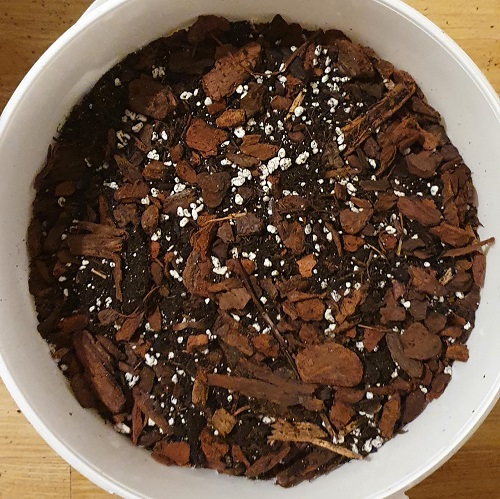
To be honest and sum it up shortly, the best kind of soil for this particular plant contains one part garden soil, half a part compost, brick chips, fine sand, and charcoal. You can replace brick chips with LECA balls or pumice stones. These helps absorb excess moisture in the soil and prevent waterlogging and overwatering issues.
Being a succulent, it needs good drainage, so the above-mentioned soil mixture is recommended to minimize any kind of drainage issues. Along with that, make sure the pot has a good number of drainage holes and is free from blockages.
3. Maintain the Watering Cycle
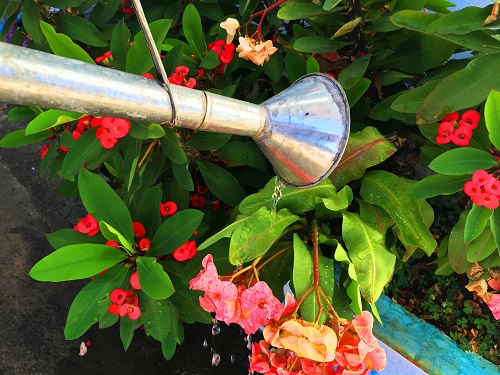
When it comes to watering needs, the Crown of Thorns can really confuse us and cause a big fuss, just like a moody person! Even though it’s a succulent, it actually prefers a moist soil environment. But beware! That doesn’t mean stagnant water or excessively moist conditions for prolonged hours.
So, what you can do is insert a metal stick or a spoon (upside down) into the soil about 3 inches deep or more. Pull the stick out and see if moist soil is stuck along the surface. If it is, then there’s enough water in the soil, so refrain from watering.
If the stick comes out dry, then it indicates that your plant is ready for a shower!
4. Switch to Phosphorus-rich Feeding
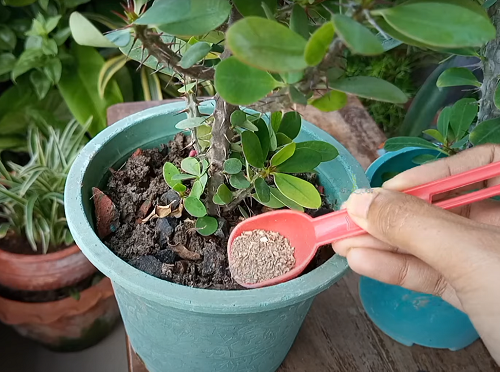
After doing all the above steps, if there are still no improvements within 2 weeks, opt for a phosphorus-rich fertilizer. Phosphorus helps promote better root and leaf growth while encouraging flowering.
Try these alternatives that are easily available in the store—Bone meal, Diammonium phosphate, Superphosphate, Seaweed extract, or 1:2:1 NPK. Use them accordingly as directed in the packages they come in.
Wait, did you know how to make organic feed right in your kitchen? This homemade phosphorus-rich organic fertilizer can be made out just of banana peels.
Dip 2-3 ripe banana peels in 1 liter of water, let it sit for a week, and dilute it in water in a 50:50 ratio. Pour this mixture in the evening as a replacement for watering and wait for 10-12 days to see the difference.
Summing Up with Some Extra Care Tips
5. Restrict Water in Winter
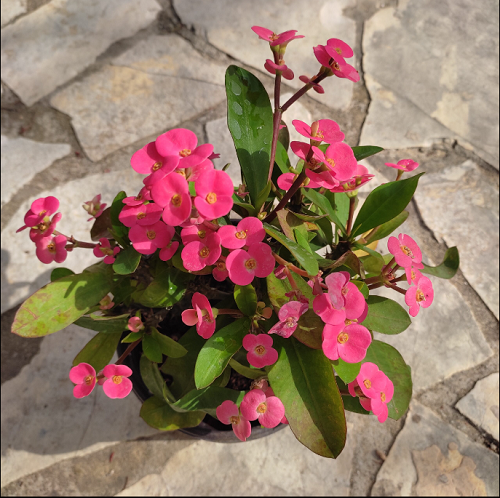
Winter is a time for rest and relax modes, and this succulent needs it too! Because it is a winter dormant plant and during the cooler months it halts all growth functions physically and physiologically. So, refrain from watering during these months. Rather, leave it in a partially shaded spot and check if the stems are becoming wrinkled or not.
If you notice anything like that, then pour some water until it drains out and leave it in a well-lit area. You might need to repeat this every 2-3 weeks.
6. Do Not Mist
Misting is never a good choice for any succulents, so don’t do it! It only creates a humid environment around the plant that attracts pests. Also, the extra moisture can lead to rot, because succulents like this one already store a lot of water in their leaves and stems.
7. Pest Monitoring
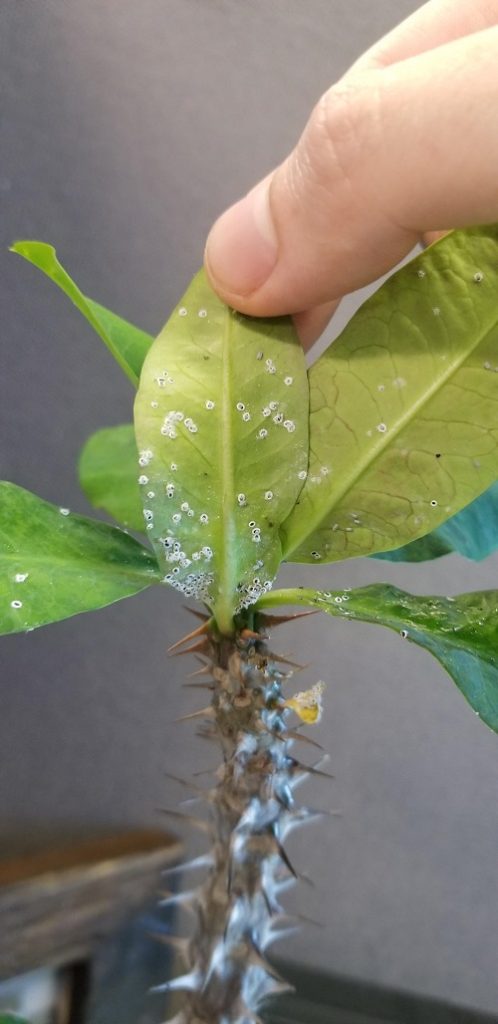
The most annoying enemies of your garden—Pests! For these plants, scales and mealybugs are the main ones you need to look out for. Practices like misting or keeping this plant near tropical plants that create humidity can encourage such pests.
The best prevention is to ensure bright, direct sunlight in the morning along with good air circulation. If you notice any signs of pests, then apply neem oil once every 7 days.
So, that’s all for today! Hope you got all your answers and now you’re ready to care for your Crown of Thorns. However, whenever in doubt, you can always write to us in the comments section below.


